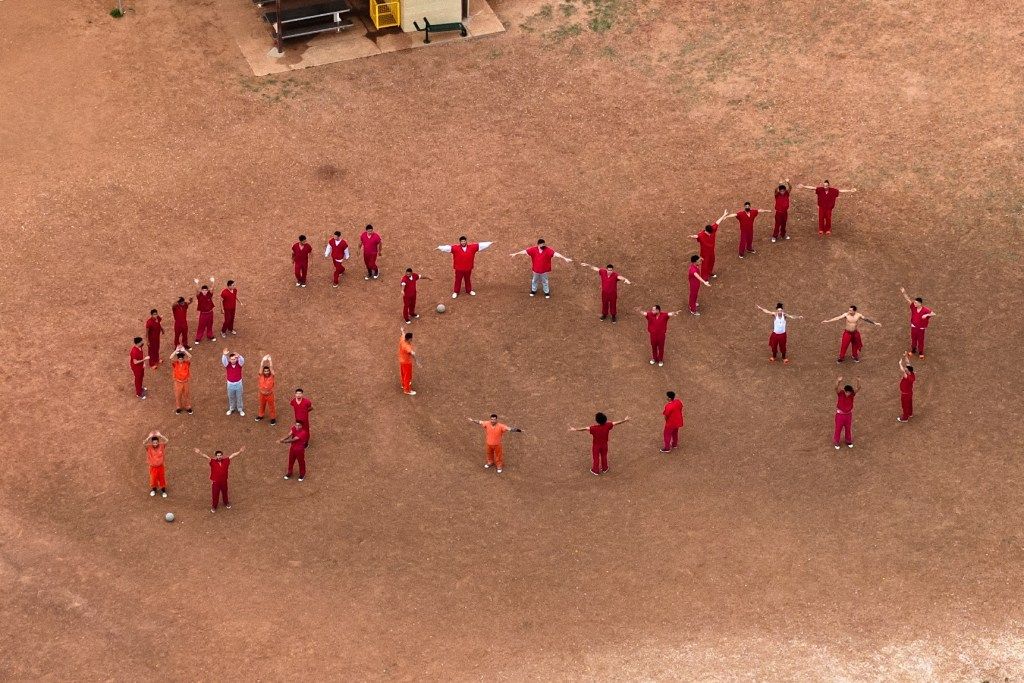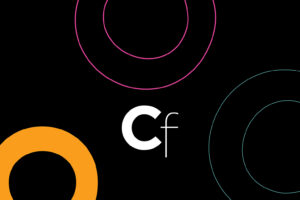A Sobering Photograph Captures Detained Migrants’ Cry for Help


With arms outstretched, donning cherry-red jumpsuits against the earthy ground of the Bluebonnet Detention Facility courtyard in Anson, Texas, 34 men detained at the facility spelled out a cry for help. Reuters photographer Paul Ratje’s drone flying overhead immortalized the message — “SOS,” also traced lightly on the soil below the men’s feet — in what will become a historic image that captured from above what we struggle to see right in front of us.
The Venezuelan individuals held at Bluebonnet are among the many who face deportation or have already been deported under the Trump administration’s likely unlawful crackdown. The president invoked an 18th-century law known as the Alien Enemies Act to dispatch hundreds of migrants to a maximum security prison in El Salvador on the basis of alleged links to the Venezuelan gang Tren de Aragua, claims for which there is insufficient proof and little to no due process. On April 19, the Supreme Court temporarily blocked Trump’s order to deport the group at Bluebonnet.
Ratje’s photo is, above all else, alarming evidence that these men fear for their life and safety. The CECOT mega-prison in El Salvador has been flagged by human rights groups for its documented cases of physical abuse and systemic denial of basic needs. It’s an urgent smoke signal, one that cannot be ignored. As a photojournalistic document, it’s also a very effective tool against the tactics of a government that operates by crowding our immediate field of vision.
Aerial photography and cinematography have a long and successful track record of calibrating our perspective. In 1977, the documentary short Power of Tens, directed by modern designers Charles and Ray Eames, made viewers viscerally aware of their relative scale in the universe. Beginning with a bird’s-eye view of a couple’s picnic near the Chicago lakefront, the lens zooms out every 10 seconds by exponentially increasing orders of magnitude until we’re transported to galaxies 1,000 light years away, then swinging perilously back to Earth by negative powers of ten until we find ourselves inside a carbon atom. Its creators described the aim of the film as demonstrating, quite simply, “the effect of adding another zero.”
I’m also reminded of Coco Fusco’s stirring video work, from 2021, depicting the artist in an austere boat rowing in the water surrounding Hart Island, a centuries-old public cemetery for the unclaimed dead where thousands of New Yorkers claimed by the COVID-19 pandemic were buried. The moments that most stayed with me from this work were the frames filmed from the sky, in which Fusco and her vessel appear like an arrow in a vast expanse, pointing to all that we could not grasp from up close.
Photos like Ratje’s are possible using drones, a technology with its own murky legacy of repression and mass surveillance. Reuters said it flew a small plane and a drone above the Bluebonnet facility on April 28 to get photos of the men detained there, whose identities are difficult to ascertain. Such strategies are warranted when the government deliberately obfuscates information. A few days ago, the White House distastefully lined its lawns with rows of mugshot-style photos the immigrants rounded up by authorities, labeled with the words “illegal alien” and their alleged crimes. Like the rest of Trump’s public strategy, the signs are meant to sow fear, not through facts and information but via a calculated lack thereof.
Seen from high up, the men in Ratje’s picture are formally abstracted, but their message is painfully real. His photograph is a fabulously effective indictment of a government that’s betting on Americans missing the forest for the trees.




